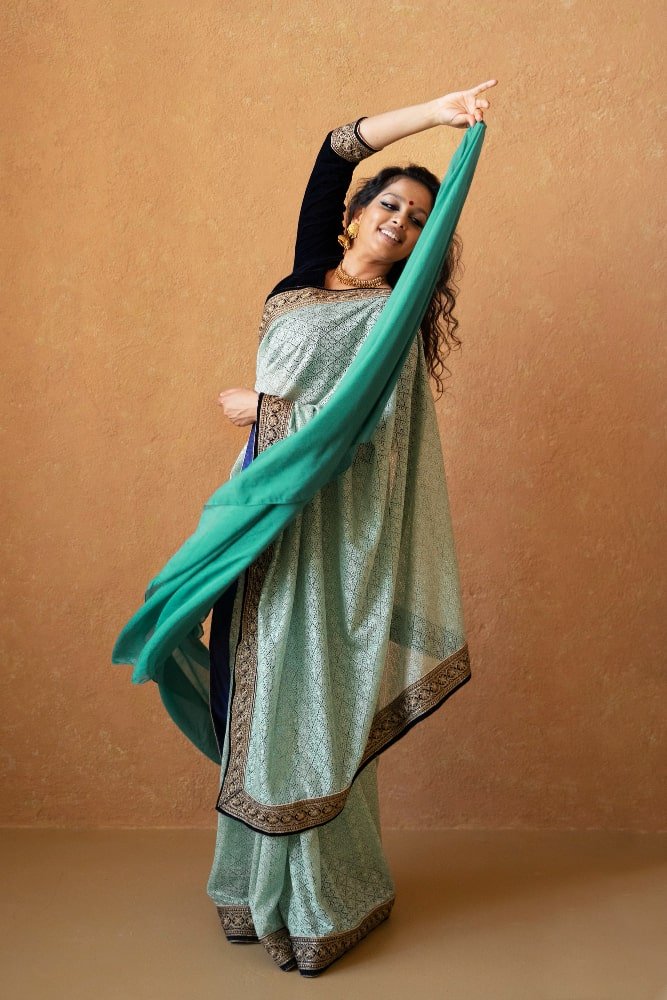
The saree, a traditional Indian garment, has a rich history that spans centuries, evolving through various cultural influences to become a symbol of grace, beauty, and tradition. This six to nine yards of fabric has not only withstood the test of time but has also adapted to modern fashion trends, making it a timeless choice for women across the globe.
Historical Roots:
The history of the saree dates back to ancient India, with references found in ancient texts and sculptures. The earliest depictions of draped clothing resembling sarees can be traced to the Indus Valley Civilization, around 2800–1800 BCE. Over the centuries, the saree underwent transformations influenced by different dynasties, regions, and cultural exchanges.
Evolution through Dynasties:
Each dynasty in India contributed to the evolution of the saree, introducing unique weaving techniques, fabric choices, and draping styles. The Gupta period (4th to 6th centuries CE) saw the emergence of finely woven silk sarees, while the Mughal era (16th to 19th centuries) brought forth luxurious fabrics and intricate embroidery, influencing the aesthetics of sarees.

Regional Diversity:
India’s diverse regions have played a significant role in shaping the saree. The Banarasi silk sarees of Varanasi, the Kanjeevaram silk sarees of Tamil Nadu, the vibrant Bandhani sarees of Gujarat, and the delicate Chikankari sarees of Lucknow are just a few examples of the regional diversity in saree craftsmanship.
Modern Day Resurgence:
While the saree has deep-rooted traditional significance, it has seamlessly adapted to the modern era. Designers have redefined the saree by experimenting with fabrics, colors, and unconventional draping styles. Contemporary designs fuse traditional craftsmanship with modern aesthetics, making sarees a versatile choice for various occasions.
Influence on Global Fashion:
The saree has transcended cultural boundaries and has found its place on international runways. Fashion designers around the world have embraced the beauty and versatility of the saree, incorporating its elements into their collections. Celebrities like Priyanka Chopra, Deepika Padukone, and Mindy Kaling have showcased the saree on global platforms, contributing to its global popularity.
Modern Draping Styles:
In the modern era, the saree has witnessed a surge in experimentation with draping styles. The traditional Nivi drape, Bengali style, and the contemporary dhoti saree are just a few examples of how the saree has evolved to cater to the diverse preferences of women. Pre-stitched sarees and saree gowns have also gained popularity, offering convenience without compromising on elegance.
Innovations in Fabrics and Designs
Advancements in textile technology have given rise to a plethora of innovative fabrics for sarees. From lightweight georgette and chiffon to luxurious satin and organza, modern sarees come in a wide range of materials. Additionally, designers are exploring unconventional prints, textures, and embellishments, bringing a fresh perspective to traditional saree designs.
The saree, with its rich history and ability to adapt to changing times, remains a quintessential part of Indian culture and fashion. Its journey from ancient civilizations to contemporary runways showcases its timeless appeal. As we celebrate the saree’s evolution, it is evident that this iconic garment will continue to enchant and inspire generations to come, weaving together the threads of tradition and modernity.


